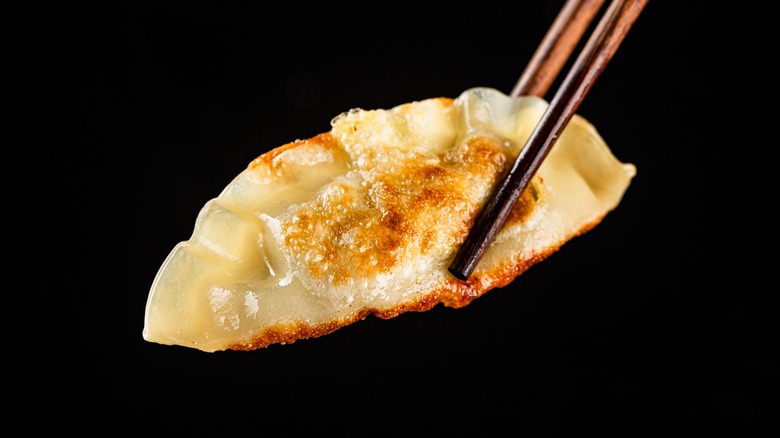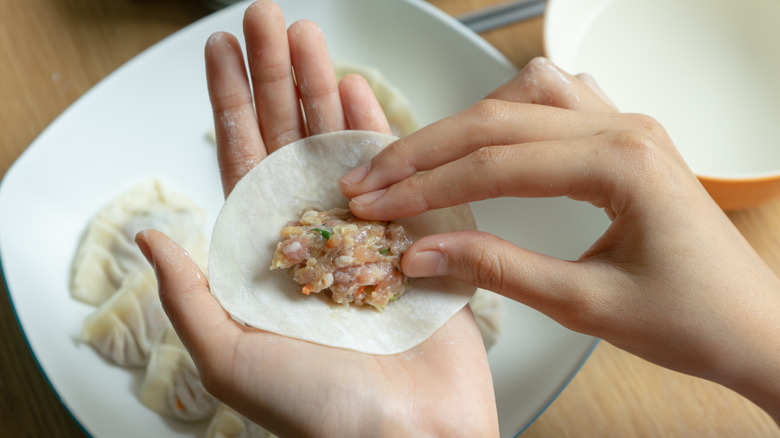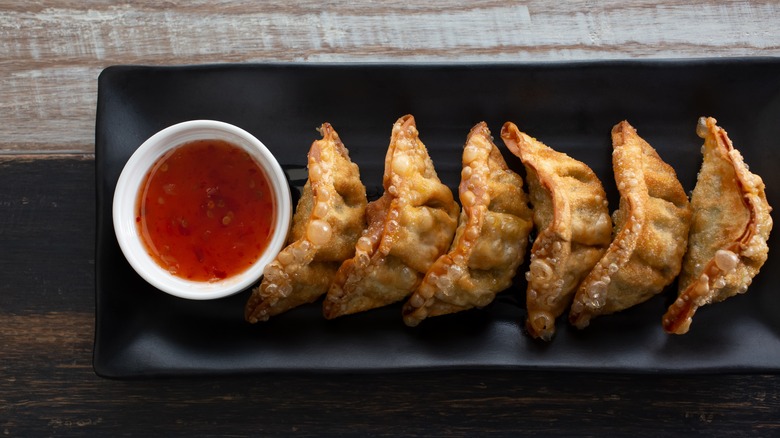The Biggest Mistake You're Making With Jiaozi, According To Chef Jing Gao
Whether you want to celebrate the new Lunar New Year or you just want to broaden your horizons by trying food from other parts of the world, one fun dish to make is jiaozi, otherwise known as Chinese dumplings. These bite-sized culinary gems are a symbol of wealth and prosperity and are a common feature on Chinese dinner tables around this time of year.
The process of making them is by and large heavily involved, requiring you to make the dough for your wrappers, put together a filling, shape and pack the food, and finally cook it all to perfection. That makes jiaozi dumplings a great meal to get the whole family involved in the preparation and to bring everyone together.
It also means that there are a lot of things that can go wrong along the way. Chef Jing Gao, a renowned expert on Chinese cuisine and CEO of Fly By Jing, tells us that one common error beginners make when trying to make jiaozi is to overfill their dumplings. Getting just the right amount of stuffing in them avoids them ripping, tearing, or exploding and creating an oozy mess.
How to steer clear of overfilling your jiaozi
When it comes to perfectly stuffing your jiaozi, Jing Gao explains, "A teaspoon of filling is usually sufficient. Moistening the edges of the wrapper with water or an egg wash helps to create a tight seal. Press out any air as you fold the dough over the filling, and use a pleating technique for a traditional look." This way, not only do you make sure you aren't piling in filling that won't fit, but you're also ensuring that the stuffing won't leak out through unsealed edges of the dumpling.
Now, even though you're not going to be using a lot of filling, it's important not to let it touch the edges of the wrappers. If it does, it can make it tough to seal the wrapper shut and can lead to your dumpling falling to bits.
Another thing to note is that as you work, leave any wrappers you're not using to rest under a damp towel. This helps prevent them from drying out, which can make them difficult to work with and hard to seal. You'll want to avoid dousing the wrappers in too much flour as you work with them, which can also make them tough to close up. When adding the filling, the side of the wrapper that's more heavily dusted in flour should be facing outward toward the palm of your hand.
Other tips for avoiding leaky jiaozi
Getting the right amount of filling in your jiaozi is just the beginning of making a tasty dish with no leaks or tears. Another thing to keep in mind is that it's important to take your time when making jiaozi. While you may be tempted to work fast to avoid your wrappers drying out, this can cause you to seal your dumplings loosely, which can also lead to a leaky filling. Instead, wrap and cook your jiaozi with care to avoid these kinds of mistakes.
Another top tip for making jiaozi is to cook your jiaozi or store them shortly after you've finished filling them. If you let them sit for too long, the wrappers start to soak up moisture from the stuffing, which will ultimately lead to them breaking and coming apart when you fry, boil, or steam them. If you don't think you'll be able to cook them shortly after wrapping, your best bet is to pop them in the freezer to use at a later date. By implementing these quick and easy tricks, you'll be able to make tasty jiaozi that don't run the risk of turning into torn, leaky, or broken bits during cooking!


